We’re heading into the homestretch of Women in Horror Month, but we’re not done yet! Today, we’re back with part two of our awesome roundtable featuring nine amazing female horror authors. Below, we talk more about villains as well as what these amazing women have planned next!
Do current events creep into your villains as you’re writing them, or do your villains serve more as a kind of escapism? Or perhaps a bit of both?
 LIZ KERIN: I think current events always seep into them, particularly nowadays when there are so many real-life villains creeping around. That said, I feel like you kind of have to hide the ball. The inspiration can’t be 1-to-1. I’ll pull traits from a couple different real-world deplorables and toss them in a dark fantasy blender. For example, General Simeon in THE PHANTOM FOREST is playing both sides, trying to appease the gods while he supports a fascist regime that actively seeks to eradicate them. He’s an opportunist whose loyalties can turn on a dime. It’s probably pretty obvious who this reminds us of. But I do try to hide the ball behind horror/fantasy tropes whenever possible.
LIZ KERIN: I think current events always seep into them, particularly nowadays when there are so many real-life villains creeping around. That said, I feel like you kind of have to hide the ball. The inspiration can’t be 1-to-1. I’ll pull traits from a couple different real-world deplorables and toss them in a dark fantasy blender. For example, General Simeon in THE PHANTOM FOREST is playing both sides, trying to appease the gods while he supports a fascist regime that actively seeks to eradicate them. He’s an opportunist whose loyalties can turn on a dime. It’s probably pretty obvious who this reminds us of. But I do try to hide the ball behind horror/fantasy tropes whenever possible.
SHANTELL POWELL: God is an unseen but ever-present villain in my novel-in-progress The Everwhen, an intertextual retelling of the Great Flood story. The story draws upon current events: climate catastrophe, mass extinction events, and wars spurred by limited resources. I started writing it as a means of dealing with my religious trauma and climate anxiety. Writing it has been therapeutic and cathartic. The same goes with my novella-in-progress The Development, which reads like a cross between “The Yellow Wallpaper” and a Cronenberg flick. This modern gothic story addresses the ongoing destruction of the Green Belt in southwestern Ontario and the isolation of a climate refugee living in suburban sprawl. The villain is the unchecked capitalism, car culture, pollution, and political corruption which endanger us all.
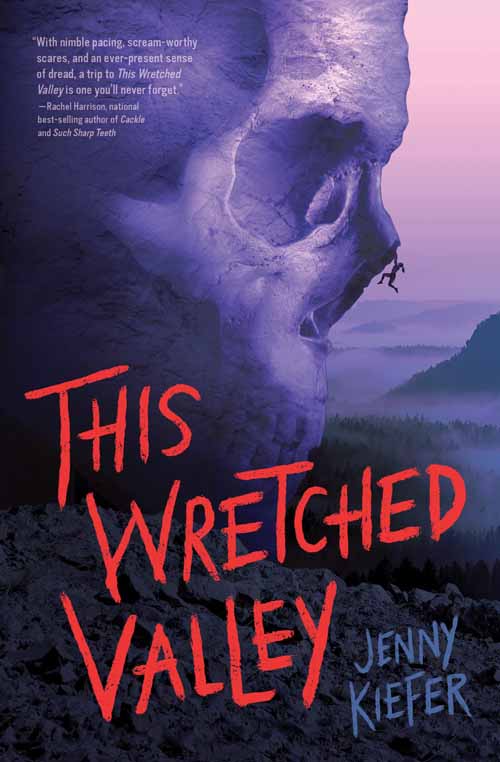 JENNY KIEFER: A little of both. I’m also a bookseller, and tend to notice unintentional trends across books every year, like there’s some zeitgeist infecting everyone. A couple years ago — just a few years after lockdowns in 2020 — there were a lot of parenting books. There’s a lot of religious horror coming out, including American Rapture, This is My Body, and others, including my forthcoming book Crafting for Sinners. And I think horror is inherently political, so sometimes even if it wasn’t entirely intentional, it’s still there.
JENNY KIEFER: A little of both. I’m also a bookseller, and tend to notice unintentional trends across books every year, like there’s some zeitgeist infecting everyone. A couple years ago — just a few years after lockdowns in 2020 — there were a lot of parenting books. There’s a lot of religious horror coming out, including American Rapture, This is My Body, and others, including my forthcoming book Crafting for Sinners. And I think horror is inherently political, so sometimes even if it wasn’t entirely intentional, it’s still there.
My debut, This Wretched Valley, has elements of (light) eco-terrorism, if you consider the humans in the story to be villainous. My next book’s villains are very much based on current events or real-life groups that want to do harm… but I hope it’s as cathartic to read as it was to write.
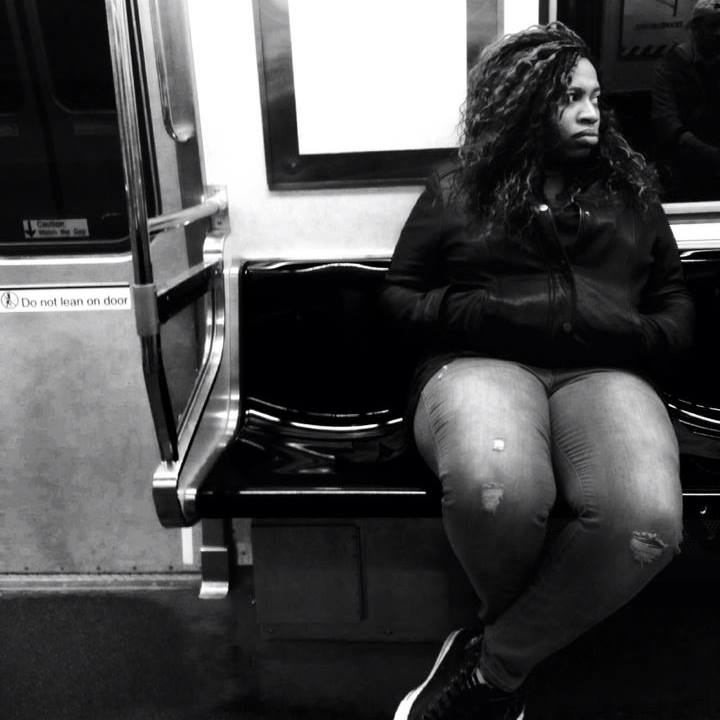 ZIN E. ROCKLYN: A bit of both. I tend to want the escapism of my work, but I can’t help but have the incredibly dangerous times leak in as well.
ZIN E. ROCKLYN: A bit of both. I tend to want the escapism of my work, but I can’t help but have the incredibly dangerous times leak in as well.
FRIDAY ELLIOTT: I’d say a bit of both! My “villains” may have human faces sometimes (though more likely to be transdimensional monsters, the Catholic church, or even nature itself), but I would say that “current events” are certainly the villain themselves more often than not. I guess I see villains as effigies for our fears: a representative of a greater concern we can look in the face and put in a tidy, fightable package.
CARLIE ST. GEORGE: Maybe a bit of both? “Creep” might be exactly the right word here. I can only think of one story offhand that I wrote as a conscious response to current events, but I do often reread my stories as I edit them and go, “… ah, I see where this is coming from” or “… oh, it appears I’ve written this particular theme. Again.”
SONORA TAYLOR: My villains usually give in to the worst impulses that lots of people feel but don’t act on (or at least, don’t act on in ways that hurt others). They’re humans unchecked, and I often make them women because it’s interesting to think how little women would need to do to be labeled as a villain when they lose control even though they get pushed so much further and so much more often than the average man.
 MAE MURRAY: Because so much of my writing is drawn from my own experience, I think it’s inevitable that my villains are directly tied to what is going on socially and politically.
MAE MURRAY: Because so much of my writing is drawn from my own experience, I think it’s inevitable that my villains are directly tied to what is going on socially and politically.
CYNTHIA GÓMEZ: I guess my above answer kind of tackled that one! But, seriously: I think that as long as we’re forced to live under a system that creates these monsters, we’re going to see them come up in our fiction, consciously or not. And, yes, for me it’s a bit of both. I wrote a story that’s wending its way through submission land right now that’s about a wealthy CEO who gets composted by his own trees, and where something very… interesting happens to the fruit that comes from those trees. It was fun to both create that villain, borrowed from and inspired by real people – but definitely my own creation – and also to daydream about the spark of hope that might come from some of these horrors. I’m really into fiction as daydreaming and wish fulfillment.
The world is filled with a lot of real-life villains right now. In your opinion, what’s the role of horror when things are so grim?
LIZ KERIN: Here’s what I love about villains, in both the real world AND in horror: they always seem to fall on their own sword. They chase away their supporters with their erratic behavior and have too much pride to ask for help. They make rash decisions out of anger and nervousness. The role of horror is to remind us that these monsters, both real and imagined, all have an Achilles heel. They can, and WILL, screw something up. The serial killer will get sloppy and leave evidence. The vampire will accidentally expose himself to sunlight. When this happens, it’s up to us to seize the moment and take our power back.
SHANTELL POWELL: I think horror provides a safe medium for readers to confront their anxieties. Horror can also educate. It shines a light on issues folks would not have otherwise considered, or it provides new perspectives on those topics. I’m a huge fan of literature written by folks outside the status quo. Amplify marginalized voices. Their wisdom is vital.
JENNY KIEFER: I have always used horror as a way to channel my anxieties. It’s a way for us to control the narrative and pick the ending. Sometimes it’s a way to stretch intrusive thoughts further into the realm of the weird or fantastical. I think there’s going to be both ends of the spectrum. You’ll have books that directly push against these real-life villains with more direct representations of the villains or stories, and you’ll have others that are more opaque allegories. Horror can be both a way to push against the status quo and a form of escapism.
ZIN E. ROCKLYN: Horror is that escape, that catharsis that teaches the evil a lesson. Evil doesn’t exactly mean villain either. Good stories make you question which is who.
MAE MURRAY: I can say that the kind of horror I like to write and read doles out some kind of justice to the real-life villains who feel untouchable. I think it serves a similar function as a person posting a photo of a guillotine. The person posting that photo probably won’t be erecting a guillotine in the town square, but it’s nice to dream that someone somewhere is making building plans.
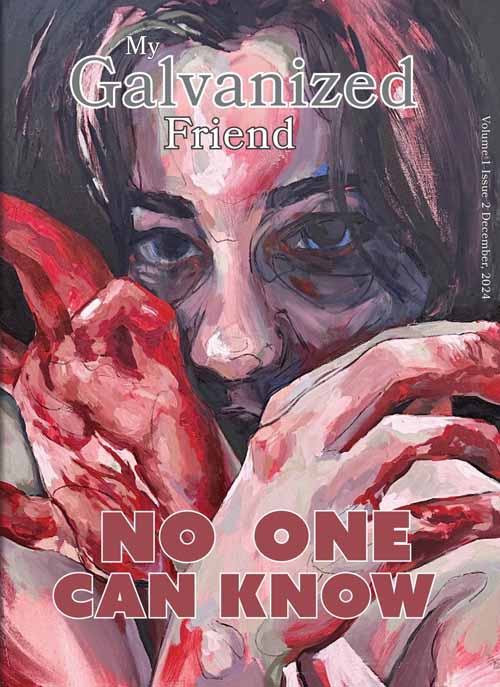 FRIDAY ELLIOTT: Horror’s great gift to its consumers is catharsis. I really believe that a great number of horror lovers are most drawn into the genre in order to process difficult concepts and feelings. Sure, horror is fun and there’s simple appeal to a scare (hence funhouses, right?), but horror as a media genre, an area of immersion and contemplation, I think serves a deeply therapeutic role for a lot of folks. I know it does for me! My favorite subgenres, tropes, and subject material in the horror space are always directly linked to my personal traumas and anxieties. Horror gives us a place to unpack the ugliness and the fear, process it, and wrap it back up again. When the world is extra grim, horror seems to me an extra healthy and necessary outlet.
FRIDAY ELLIOTT: Horror’s great gift to its consumers is catharsis. I really believe that a great number of horror lovers are most drawn into the genre in order to process difficult concepts and feelings. Sure, horror is fun and there’s simple appeal to a scare (hence funhouses, right?), but horror as a media genre, an area of immersion and contemplation, I think serves a deeply therapeutic role for a lot of folks. I know it does for me! My favorite subgenres, tropes, and subject material in the horror space are always directly linked to my personal traumas and anxieties. Horror gives us a place to unpack the ugliness and the fear, process it, and wrap it back up again. When the world is extra grim, horror seems to me an extra healthy and necessary outlet.
CARLIE ST. GEORGE: I don’t know if horror has one specific role, exactly. Sometimes, we need scary stories that are just as angry and hopeless and afraid as we are. Other times, we need stories where people defeat the evil, come back from the dead, survive the night. And other times we just need some silly, gory escapism to take a break from all the many, many real-world atrocities. Whether you come to horror for truth, comfort, validation, or any combination thereof, it can be a safe place to work through your anxieties, your trauma, your rage.
SONORA TAYLOR: To give people horrors that they can escape from by putting the book down, and also give people horrors they can experience and live through by nature of they’re not actually being the characters harmed in the story. It creates the relief of survival, which is comforting.
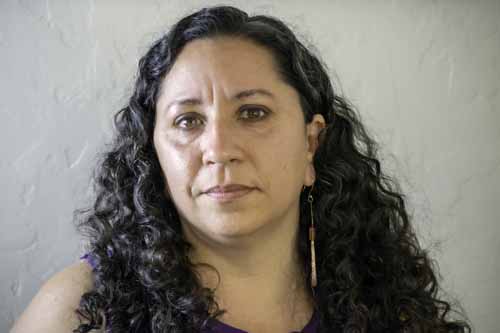 CYNTHIA GÓMEZ: Often what’s going on in real life is so awful that the only way we can even comprehend it is through metaphor. Metaphors are the eclipse glasses to the horrors of our lives. It’s often said that watching horror or consuming it can be a way to take our anxiety and fear and experience them in controlled doses, through several layers of metaphor and removal. I’m sure you have your comfort horror films: mine is Rosemary’s Baby. (Also, believe me when I say I’m very aware of the irony there, given who made that film.)
CYNTHIA GÓMEZ: Often what’s going on in real life is so awful that the only way we can even comprehend it is through metaphor. Metaphors are the eclipse glasses to the horrors of our lives. It’s often said that watching horror or consuming it can be a way to take our anxiety and fear and experience them in controlled doses, through several layers of metaphor and removal. I’m sure you have your comfort horror films: mine is Rosemary’s Baby. (Also, believe me when I say I’m very aware of the irony there, given who made that film.)
There’s comfort and catharsis in horror, for those of us who love it. I feel it when I write, and hopefully that’s what some of my readers get when they read my work. I do write about a lot of oppressors doing their whole oppression thing, because that’s what does happen in the world, and it’s pretty damned dark, but in my work the oppressors or would-be oppressors often get consequences. So my writing is dark but it’s lighter than reality often is.
What’s next for you? What are you working on, and what’s coming out soon for you?
LIZ KERIN: I’ve got a new spec fic out on sub right now and my debut, THE PHANTOM FOREST, is being re-released on May 27th!
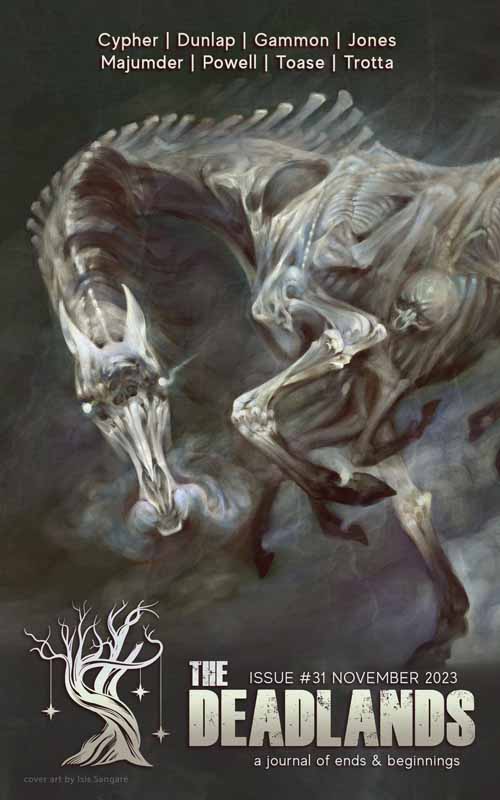 SHANTELL POWELL: Next month, I’ll be going to the Banff Centre for Arts and Creativity for a horror residency. I’ll be working with Jessica Johns (author of Bad Cree) and doing a deep dive into the horror genre. I received grants from the Ontario Arts Council and the Waterloo Arts Fund to create a collection of short stories tentatively titled Breath Sea Earth Flesh, and I’m writing one new story a month for it. I have a few horror stories coming out this year: “The Qalupalik” is being published in the “Dark Waters” edition of Flash Fiction Online on March 14. It’s a story about what happens when two little kids meet up with a terrifying monster from Inuit folklore. My story “All That Came From Our Lips Were Lilies” has been accepted by Hedone Books and will be published in the erotic eco-horror anthology Silk and Foxglove. I don’t have a publication date for that yet. Neither do I have a publication date for the horror anthology Asylum of Terror Vol. 2. My story “The Infective,” an uncanny tale of COVID anxiety, will be published in it. Other than that, I’m revising The Everwhen and completing the first draft of The Development. If all goes well, I’ll be sending The Everwhen off to agents and publishers this year. I post publishing updates on my blog, Nudity is Only Skin-Deep, at http://shanmonster.dreamwidth.org
SHANTELL POWELL: Next month, I’ll be going to the Banff Centre for Arts and Creativity for a horror residency. I’ll be working with Jessica Johns (author of Bad Cree) and doing a deep dive into the horror genre. I received grants from the Ontario Arts Council and the Waterloo Arts Fund to create a collection of short stories tentatively titled Breath Sea Earth Flesh, and I’m writing one new story a month for it. I have a few horror stories coming out this year: “The Qalupalik” is being published in the “Dark Waters” edition of Flash Fiction Online on March 14. It’s a story about what happens when two little kids meet up with a terrifying monster from Inuit folklore. My story “All That Came From Our Lips Were Lilies” has been accepted by Hedone Books and will be published in the erotic eco-horror anthology Silk and Foxglove. I don’t have a publication date for that yet. Neither do I have a publication date for the horror anthology Asylum of Terror Vol. 2. My story “The Infective,” an uncanny tale of COVID anxiety, will be published in it. Other than that, I’m revising The Everwhen and completing the first draft of The Development. If all goes well, I’ll be sending The Everwhen off to agents and publishers this year. I post publishing updates on my blog, Nudity is Only Skin-Deep, at http://shanmonster.dreamwidth.org
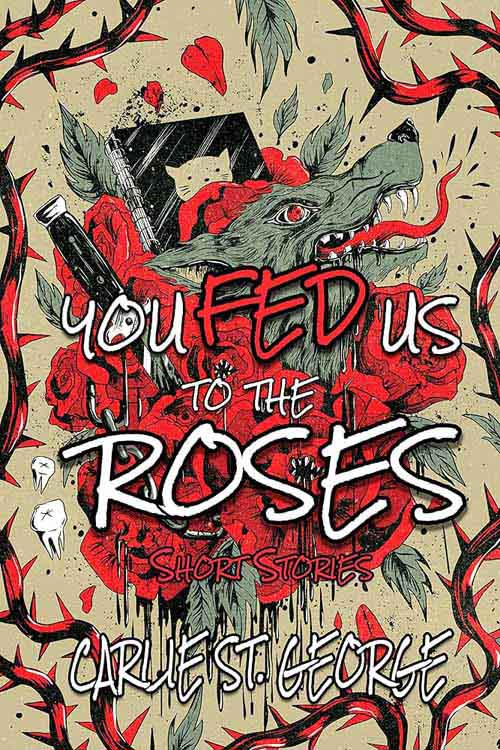 CARLIE ST. GEORGE: Actually, this is the first time in a while I don’t have any short stories on the horizon. I’ve mostly been focused on novel writing lately. Right now I’m working through 3rd Draft Edits on a psychological horror novel about grief, road trips, and corpse art. Once all crits and edits are done, I’ll (hopefully) begin the Great and Dreaded Agent Hunt again. *crosses fingers*
CARLIE ST. GEORGE: Actually, this is the first time in a while I don’t have any short stories on the horizon. I’ve mostly been focused on novel writing lately. Right now I’m working through 3rd Draft Edits on a psychological horror novel about grief, road trips, and corpse art. Once all crits and edits are done, I’ll (hopefully) begin the Great and Dreaded Agent Hunt again. *crosses fingers*
JENNY KIEFER: Crafting for Sinners releases on October 7, and should have exciting things coming up soon like a cover reveal and reviews. I also have a story in The Rack Vol. II sometime later this year. I have some inklings for a third novel and some other secret projects I’ll be working on.
ZIN E. ROCKLYN: I’m working on my second novella, a short story collection, and short stories in general, all in horror this time.
MAE MURRAY: I’ve had a pretty stressful few years, both personally and professionally, so right now I am dialing things back and learning to find joy in writing and the daily task of living again. The political climate doesn’t make it easy. I hope to start querying and become agented at some point. On the horizon, I have plans for a vampire novel and a grief-horror novella, but everything is in early stages.
FRIDAY ELLIOTT: Tea work keeps me very busy, so my writing is pretty slow-going. I have three writing projects on my bench bringing me great joy and inspiration, and to be perfectly honest I have no idea when they’ll be finished! One is a short story collection framed as a history of California through horror bites. The next is a full-length novel (or maybe a novella?) in a “Teeth meets Black Swan meets The Fly” kind of vein. The third is a melancholia novel-in-vignettes set in a small mining town during the gold rush in which the dead don’t stay asleep. They all thrill me, and I sure hope to finish and share them at some point in the next year or two. In the meantime, I’m putting out short stories, flash fiction, and “screams of consciousness” blog posts on my personal site at fridayelliott.com!
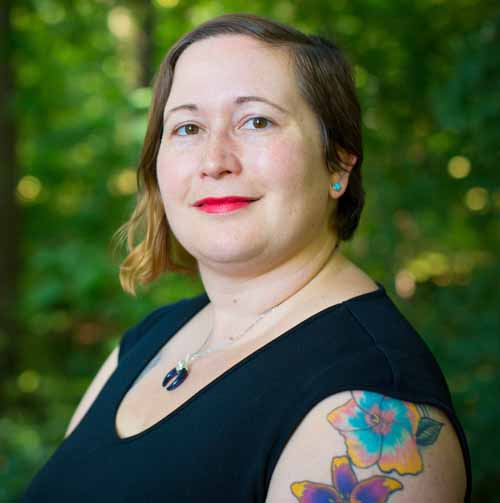 SONORA TAYLOR: I’m working on my next novel. I have no upcoming releases just yet, but you can follow along with what I’m doing on my website.
SONORA TAYLOR: I’m working on my next novel. I have no upcoming releases just yet, but you can follow along with what I’m doing on my website.
CYNTHIA GÓMEZ: I’ve got a flash piece coming up in Nightmare, one of my bucket list publications, and I’m so excited about it. But what’s really fun is coming next year; I have a novella coming out called Muñeca, and it’s about a working-class witch who sets out to rescue a bespelled heiress to Spanish colonial wealth, and loses control of her powers and her heart in the process. It’s got queer found family, colorism, class hatred, and a little window into 1968 Oakland.
And that’s our roundtable interview series for Women in Horror Month 2025! Tremendous thanks to our amazing women authors for being part of this!
Happy reading, and happy Women in Horror Month!
